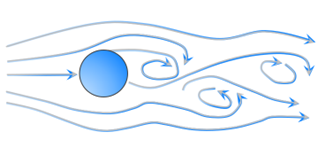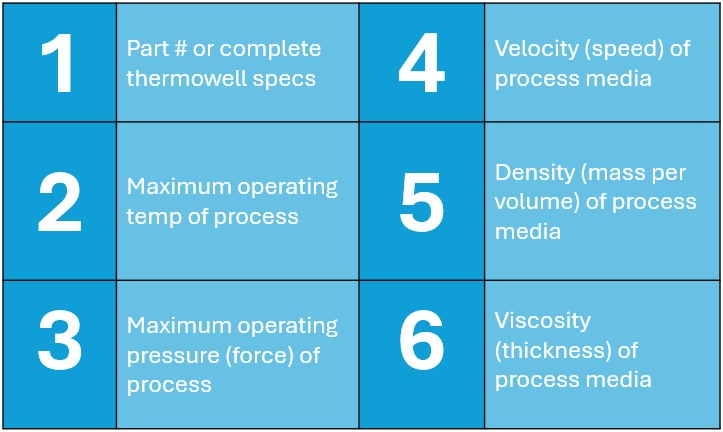
By:
Tino Goncalves
Product Sales Manager
Published on:
March 11th, 2024
Subscribe now and get the latest blog posts delivered straight to your inbox.
When to Use a Vortex Thermowell in High-Velocity Applications

By:
Tino Goncalves
Product Sales Manager
Published on:
March 11th, 2024

If you work in process industries like oil and gas or chemical/petrochemical, you know that a thermowell is a critical component that can help ensure the safe operation of your systems. That's because it is the thermowell's job to protect the temperature monitoring instruments from system pressure, high-velocity flow and corrosive media. However, keep in mind that selecting the wrong thermowell to do the job can have negative consequences that will put the safety of your process and your people at serious risk.
Ashcroft has been in the temperature measurement business for decades. As the firm's temperature product manager, I know that flanged thermowells are typically the preferred choice for these applications because of their design and cost. In reality, though, even when the cost feels prohibitive, there are certain situations where a Vortex Thermowell may be your only option.
In this article, you will learn about the forces that can make a thermowell fail and the factors to consider when determining whether the Vortex Thermowell is worth the added expense. You will also get links to additional resources related to this topic that may be of interest to you.
What can cause a thermowell to fail?
Wake turbulence, which is created by your process, can cause a thermowell to fail and damage your temperature measurement instruments and your process system. Here's what happens:
- In high-velocity applications, media will flow across the shank of the thermowell resulting in a phenomenon called vortex shedding.
- This occurs when a change in the flow's momentum forms a wake (or vibration-induced vortices) directly behind the thermowell and oscillates at a high frequency.
- The wake frequency is determined by the thermowell's diameter and the speed of the fluid.
- If the wake frequency is within 20% of the thermowell's natural frequency, the resulting vortex shedding can lead to the thermowell's failure which could damage the temperature-measuring device and disrupt your process.
When fluid velocity is low, the risk of a thermowell failing is significantly reduced.
Figure 1: Wake turbulence.

To help ensure that your thermowell can meet the demands of your application, the Wake Frequency Calculation (WFC) was developed per ASME PTC 19.3 TW-2036 standards. The purpose was to establish a standard for using different styles of thermowells across a range of different applications. These standards evaluate the external, static and dynamic pressures of the process against the specifications of the thermowell. Read, What is a Thermowell Wake Frequency Calculation to learn more.
What to do when you fail a wake frequency calculation.
When you need assurance that a thermowell can withstand the stresses of a high-velocity application without failing, you will request a wake frequency calculation from the manufacturer. To complete the calculation, you will need to provide the manufacturer with the following six pieces of information:
Figure 2: 6 requirements for a wake frequency calculation.

Once you provide all the information required for the calculation, you will receive a probability of failure based on the thermowell's:
- Oscillating or dynamic stress limit: If the drag and lift forces that cause oscillation exceed the stress limit of the thermowell, the device will fail.
- Dynamic or steady-state stress limit: If the steady-state stress exceeds the allowable stress of the thermowell, the device will fail.
- Hydrostatic pressure limit: If the pressure applied exceeds the pressure ratings of the thermowell, it will fail.
- Frequency limit: If the resonance frequency of the thermowell is not high enough to prevent damaging oscillations from the flow, the thermowell will vibrate until it fails.
To be considered safe for use, the thermowell must pass all four of these conditions. If it fails any of these conditions, changes must be made to the thermowell to pass the calculation or you can use a vortex thermowell.
Why use a vortex thermowell?
When a standard flanged thermowell cannot pass ASME PTC 19.3 TW-2016, you have two choices: make the ASME-recommended adjustments to your device or use a vortex thermowell. The second option comes at a higher price point. As a comparison, the vortex thermowell can range from $900 - $5,000 while a flange thermowell has a cost range of $125 - 2,000. But there is a good reason for the cost difference: The failure of a lower-cost thermowell can be catastrophic.
Engineered for safety.
The vortex thermowell is designed using computational fluid dynamic analysis that places helical strakes on the shank to discourage vortex shedding. This reduces the amplitude of oscillations by more than 90 percent as compared to the standard round bar design and prevents any damage to the device. Along the length of the vortex thermowell, the helical strakes also supported cross-plane flow that is not present with a standard thermowell. Plus, this design still allows for the maximum allowable pressure load using the original thermowell stem dimensions.
Figure 3: Vortex thermowell.

Clear advantages.
- Wake frequency calculations will no longer be required.
- Steady-state thermal stress and pressure calculations will be sufficient
- Fewer limitations due to immersion length.
- Fast installation or replacement completions.
- Quick response to temperature variations due to small root and tip diameters.
- Improved accuracy and response time of temperature measurement.
- Compatible with nozzles with small ID and high standoff length.
- No need to adjust the thermowell length or diameter.
- No added expense to retrofit thermowells with support collars.
- Longer life and accurate measurement.
Ready to learn more?
Now that you know why some people in your industry choose a vortex thermowell for high-velocity applications, you may still have questions. We understand that every situation is unique, so feel free to contact us and speak with one of our product experts. Feel free to contact us any time for help. In the meantime, here are some related articles that may be of interest to you:
- How Much Do Thermowells Cost? 5 Factors that Influence Price
- What is a Thermowell Wake Frequency Calculation?
- Fitting a Thermowell to Bimetal Thermometer or RTDs/Thermocouples
- When Should I Use a Coated Thermowell?
For more information about selecting the right thermowell, watch this webinar:
Tino Goncalves, Product Sales Manager
Tino is the Product Sales Manager here at Ashcroft. He has over 20 years of experience in test and measurement instruments and holds a Bachelor of Science in management and electrical engineering.











